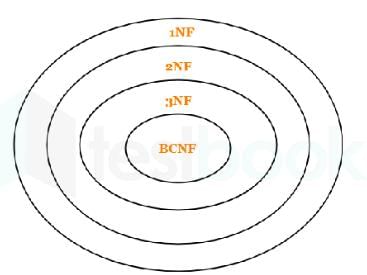Test: Functional Dependency - Computer Science Engineering (CSE) MCQ
10 Questions MCQ Test - Test: Functional Dependency
We can use the following three rules to find logically implied functional dependencies. This collection of rules is called
The relation employee(ID,name,street,Credit,street,city,salary) is decomposed into
employee1 (ID, name)
employee2 (name, street, city, salary)
This type of decomposition is called
employee1 (ID, name)
employee2 (name, street, city, salary)
This type of decomposition is called
There are two functional dependencies with the same set of attributes on the left side of the arrow:
A->BC
A->B
This can be combined as
A->BC
A->B
This can be combined as
Suppose we wish to find the ID’s of the employees that are managed by people who are managed by the employee with ID 123. Here are two possible queries:
I. SELECT ee.empID
FROM Emps ee, Emps ff
WHERE ee.mgrID = ff.empID AND ff.mgrID = 123;
II. SELECT empID
FROM Emps
WHERE mgrID IN
(SELECT empID FROM Emps WHERE mgrID = 123);
Which, if any, of the two queries above will correctly (in SQL2) get the desired set of employee ID’s?
Suppose now that R(A,B) and S(A,B) are two relations with r and s tuples, respectively (again, not necessarily distinct). If m is the number of (not necessarily distinct) tuples in the result of the SQL query:
R intersect S;
Then which of the following is the most restrictive, correct condition on the value of m?
Consider the following statements of RDBMS. Which of the following are correct?
I. Every relation in 3NF is also in BCNF
II. Every relation in BCNF is also in 3NF
Consider the relation R(X, Y, Z, W, V) in which X, Y, Z, W, and V are the attributes and the following set of functional dependencies
A = {{X, Y} → {Z, W}, {X, W, V} → {Y, Z}}
Which of the following is the trivial functional dependency in A+, where A+ is closure of A?
Consider a relational schema S = (U, V, W, X, Y, Z) on which the following functional dependencies hold:
{U → V, VW → X, Y → W, X → U}
Which are the candidate keys among following options?
A relation in which every non-key attribute is fully functionally dependent on the primary key and which has no transitive dependencies is in -




















